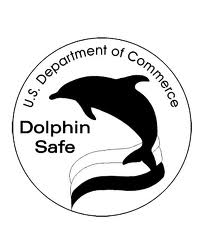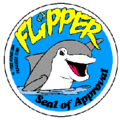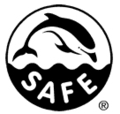Dolphin Safe Label

The reasons for this label started in 1990 by the United States Department of Commerce are because dolphins are commonly swimming with schools of Yellowfin Tuna and fishermen used the dolphins as an indicator for the presence of tuna. End result, dolphins get caught in the nets with tuna and the dolphins were not offered a chance to escape. Thus the entire species of dolphin in the Eastern Tropical Pacific was in danger. Dolphin Protection movements by environmental groups helped pass this label law under the Consumer Information Act known as DPCIA. One interesting note is that dolphins do not swim with Skipjack Tuna, thus you can be almost 100% sure this species of tuna is without any dolphin fatalities. Unfortunately, Skipjack Tuna is not always listed on the can or jar we buy.
The issues with the 1990 DPCIA label are many. Only U.S. waters are included, so canneries are free to purchase tuna from other foreign fisheries, thus U.S. regulations can not assure U.S. consumers that the tuna they buy is dolphin-safe tuna. Also verification is neither universal nor independent. Only U.S. tuna fishing boats and U.S. canneries are subject to surprise inspection and observation. In addition, a 2008 report presented by Greenpeace stated that these labels do not mean no other species of fish was caught with the tuna. The report also stated that there was no protection against the environmental impact caused by fishing for tuna.


Unfortunately, the label has received scrutiny from the World Trade Organization and Environmental groups in the United States. The reason for this is because Earth Island Institute is failing to inspect and ensure that dolphins are not harmed.
Bill Lauto, GTG





















